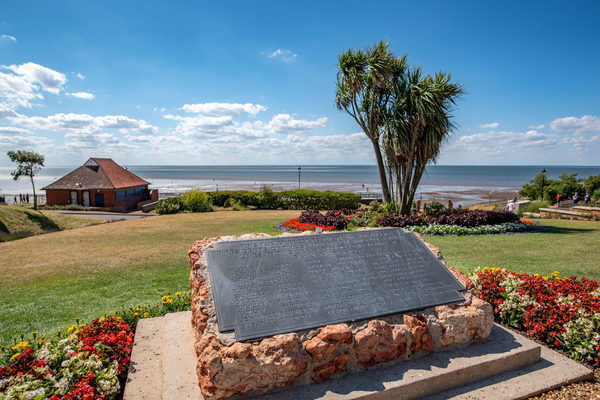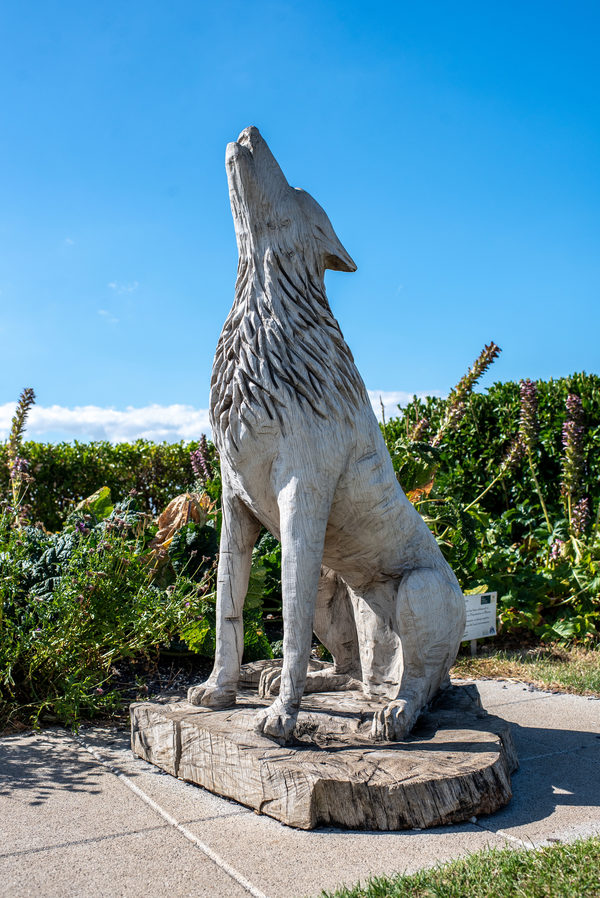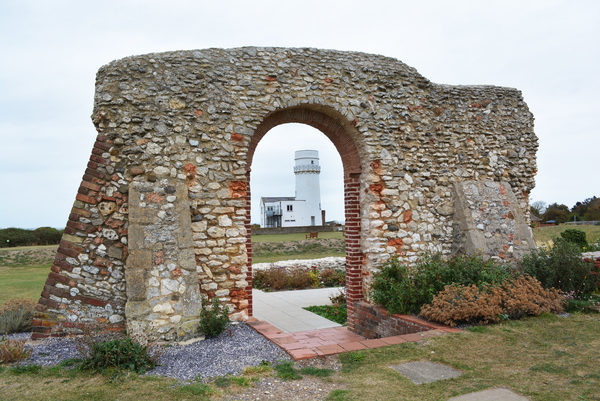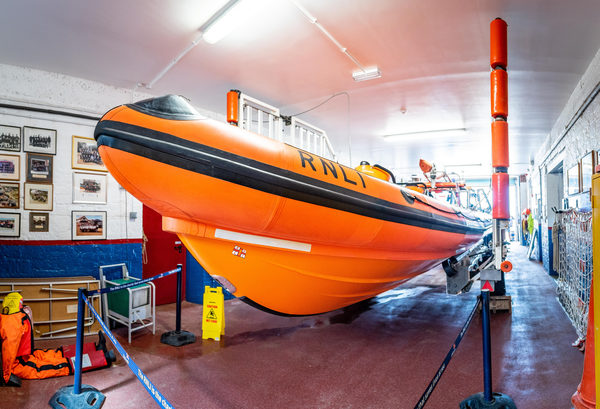The stripes in the cliffs are caused by layers of different-coloured rock. The main layers are carrstone and chalk. Carrstone is the brown layer and consists of sandstone - sand cemented together by iron oxide (rust). In places where the cement is stronger, the rock is darker and less crumbly. There are no fossils in this layer apart from a little fossilised wood. The red and white chalk is made of limestone. Limestone forms in warm tropical climates, which suggests that Hunstanton's climate was once warmer than it is today. The colour of the red chalk is due to iron staining.
During the Cretaceous geological period, between 135 and 70 million years ago, the cliffs were under the sea, and are rich in fossils formed from the dead creatures which fell onto the seabed. Fossils are found in the chalky layers of Hunstanton cliffs. The safest way to find them is by cracking open the rocks away from the base of the cliffs. All of the following types of fossils have been found at Hunstanton: coccoliths - microscopic plants; bivalves - similar to cockles and oysters; belemnites -similar to cuttlefish; ammonites - similar to nautilus; brachiopods - similar to clams; echinoids - sea urchins; shark's teeth.
The cliffs are colonised by fulmars - birds which look like gulls but are in fact petrels. You will see pairs of these birds on their nests scattered along the entire length of the cliffs or circling in the air nearby.
Also, look out for the historic buildings perched on the cliff tops. These include St Edmund's Chapel. This building, now in ruins, was erected in 1272 in memory of St Edmund who landed at Hunstanton in 855 to be crowned King of East Anglia. Edmund led an army against Viking invaders but was defeated, captured and martyred. The area around the chapel is now called St Edmund's Point to commemorate this event. Edmund later became the first patron saint of England.
You will also see the Coastguard Lookout Tower at St Edmund's Point. This box-like building with its viewing platform on the first floor was built in 1907. It was a Marconi listening post in both World Wars, used for gathering military intelligence from wireless signals, and is now a private residence.
Near the Lookout Tower is the imposing Hunstanton Lighthouse. A lighthouse has been here since 1665, but the present lighthouse was built in 1840, although it ceased operations in 1922 and became a private residence.
After looking at the historical remnants on the top of the cliffs, cast your gaze across the Wash to the Lincolnshire coast to see a sign of the future. Looking out to the mouth of the Wash you will be able to see the wind farm offshore from Skegness, generating electrical power for thousands of homes.
The cliffs stretch between the town of Hunstanton and the neighbouring village of Old Hunstanton, and are part of the Norfolk Coast Area of Outstanding Natural Beauty.








